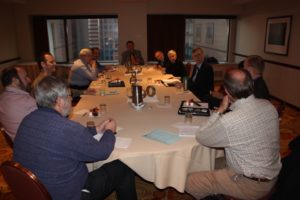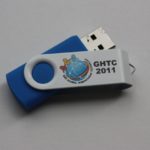By the end of 2008, there was a growing need for a major international conference to attract people from the humanitarian technology sphere. Though there was substantial humanitarian effort around the world, it tended to be scattered, disparate, and communication among those involved was hit or miss. To the knowledge of those of us in IEEE working on humanitarian issues there was no major annual conference with the goal of attracting a large international audience and covering a wide range of the important topics, as is done with numerous IEEE Society and Council flagship technology conferences. What humanitarian conferences we knew of had been one-offs, with no year-to-year continuity, and that continuity was something which IEEE had shown to be a key element in continued progress within a given technical area.
In late 2009 Sherrie Wen of the Seattle Section wanted to start an international humanitarian technology conference. She contacted several people. Many discussions resulted in the IEEE Seattle Section and Region 6 deciding to hold such a conference and accept the financial responsibility. This was a gutsy move, since the financial model was expected to be quite different than the typical IEEE conference, where companies and organizations financially support attendees, and there was a substantial chance for a significant financial hit. Much effort had to be devoted to getting donations from various organizations to support attendees coming from around the world. The organizations which responded with support included the IEEE Foundation, ASME Foundation, IEEE Humanitarian Technology AdHoc Committee, Engineering for Change (E4C), and NASA.
 A committee was assembled in early 2010 to organize a conference for the fall of 2011, which allowed only about 18 months to pull it together, a relatively short time, especially for a new conference in a new field. However, with a lot of emails burning up the Internet and weekly or biweekly telecons, it all came together in astonishingly effective fashion. Much credit is due the leadership of Paul Kostek, Ed Perkins, Mike Andrews, Keith Moore and Lew Terman for providing the needed inspiration, drive and organization.
A committee was assembled in early 2010 to organize a conference for the fall of 2011, which allowed only about 18 months to pull it together, a relatively short time, especially for a new conference in a new field. However, with a lot of emails burning up the Internet and weekly or biweekly telecons, it all came together in astonishingly effective fashion. Much credit is due the leadership of Paul Kostek, Ed Perkins, Mike Andrews, Keith Moore and Lew Terman for providing the needed inspiration, drive and organization.
Of particular note was the need for publicity. The humanitarian space is not a single coherent community, as is normally found in the various technical disciplines in the IEEE fields of interest, with databases of conference attendees, published authors, and previous presentations and publications. In the absence of such databases, making sure the right people knew about the conference was of prime importance. Soon Wan took major charge of this and with skillful use of social networking and other modern means of communication was able to produce a successful publicity campaign.
 The committee’s efforts resulted in a successful inaugural conference which was held October 30 – November 1, 2011, in Seattle with over 250 attendees from 17 countries, and the presentation of 94 submitted papers from 14 countries, as well as numerous invited and keynote speakers, panels sessions and tutorials. The conference format facilitated strong interaction between attendees. The papers are available on IEEE Xplore.
The committee’s efforts resulted in a successful inaugural conference which was held October 30 – November 1, 2011, in Seattle with over 250 attendees from 17 countries, and the presentation of 94 submitted papers from 14 countries, as well as numerous invited and keynote speakers, panels sessions and tutorials. The conference format facilitated strong interaction between attendees. The papers are available on IEEE Xplore.




